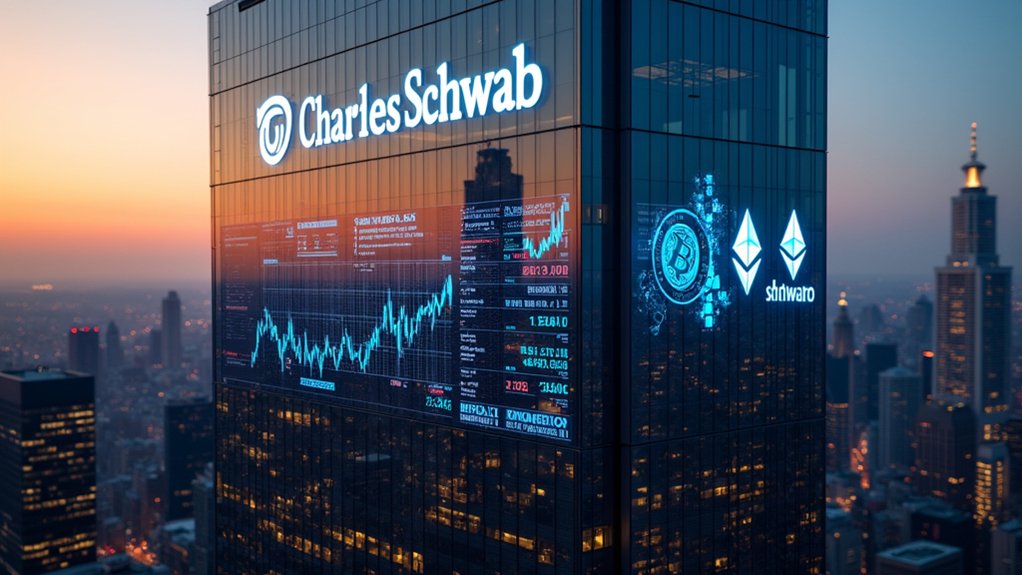Avalanche is a fast blockchain platform that launched in 2020. It's designed to process over 4,500 transactions per second using an energy-efficient system called Proof-of-Stake. The platform features three interconnected blockchains that handle different tasks, from managing digital assets to running smart contracts. Avalanche uses its own cryptocurrency called AVAX and lets organizations build custom blockchain solutions. Its unique structure and advanced technology offer more to explore.

Avalanche Crypto is a high-speed blockchain platform that launched in 2020. It's designed to solve three main challenges in the blockchain world: scalability, security, and decentralization. The platform uses a Proof-of-Stake system to verify transactions and has its own cryptocurrency called AVAX. The project has gained significant attention, securing $230 million in funding from major investors in September 2021.
What makes Avalanche special is its unique three-blockchain structure. These blockchains work together like a well-oiled machine. The X-Chain handles the creation and exchange of digital assets. The C-Chain deals with smart contracts and is compatible with Ethereum's tools. The P-Chain manages the network's validators and allows for the creation of subnets, which are custom blockchains that can be built on top of Avalanche.
The platform's performance is impressive. It can handle over 4,500 transactions every second, and these transactions are completed in less than two seconds. Users don't have to worry about high fees either – most transactions cost just a few cents. Validators must stake a minimum of 2,000 AVAX tokens to participate. This makes Avalanche much faster and cheaper than many other blockchain platforms.
The technology behind Avalanche is quite advanced. It uses something called a Directed Acyclic Graph (DAG) to organize transactions. The platform also uses the Snowball Algorithm for reaching agreement on transactions across the network. For developers, Avalanche supports the Solidity programming language, which is widely used in the blockchain industry. The platform utilizes the Snowman Consensus Protocol to maintain network security and efficiency.
One of Avalanche's biggest strengths is its subnet feature. Subnets are like separate lanes on a highway – they allow different types of traffic to move without slowing each other down. Organizations can create their own custom blockchains within these subnets, tailored to their specific needs. This makes Avalanche very flexible and able to handle many different types of applications. The platform is particularly appealing due to its energy-efficient design, making it an environmentally conscious choice for blockchain operations.
The platform's compatibility with Ethereum is another key feature. Developers who've worked with Ethereum can easily bring their projects to Avalanche since it supports the same tools and programming language. This compatibility has helped Avalanche attract many developers and projects to its network.
Since its launch, Avalanche has become a significant player in the blockchain space. Its combination of speed, low costs, and flexibility has made it popular for building decentralized applications. The platform continues to grow as more developers and organizations discover its capabilities for creating custom blockchain solutions.
Frequently Asked Questions
Can I Mine Avalanche Cryptocurrency From Home Using Regular Computer Hardware?
No, Avalanche (AVAX) can't be mined at home since it doesn't use mining like Bitcoin does.
Instead, it uses a system called Proof-of-Stake where people validate transactions by staking AVAX tokens.
While someone can't mine AVAX with computer hardware, they can participate from home by delegating tokens to a validator.
This requires owning at least 25 AVAX tokens and doesn't need special equipment.
What Are the Minimum Staking Requirements to Become an Avalanche Validator?
To become an Avalanche validator, someone needs at least 2,000 AVAX tokens, which costs about $42,440 at current prices.
They'll need solid computer hardware, including an 8-core CPU, 16GB of RAM, and 512GB of storage. Their internet connection must be fast at 300 Mbit/s.
They've got to keep their system running 99% of the time and handle regular security updates.
Staking periods can last from 2 weeks to 1 year.
How Does Avalanche's Transaction Speed Compare to Ethereum and Bitcoin?
Avalanche's transaction speed is notably faster than both Ethereum and Bitcoin. It can process 4,500 transactions per second (TPS), while Ethereum currently handles 15-45 TPS, and Bitcoin manages only 7 TPS.
Avalanche confirms transactions in under 2 seconds, compared to Ethereum's 13 seconds to 5 minutes, and Bitcoin's average of 10 minutes.
While Ethereum's planned upgrades aim to reach 100,000 TPS, Avalanche currently offers much faster processing speeds.
Is Avalanche Crypto Available on All Major Cryptocurrency Exchanges?
Yes, Avalanche (AVAX) is widely available on most major cryptocurrency exchanges.
It's listed on popular platforms like Binance, Coinbase, and Kraken, with support from over 47 exchanges worldwide. Traders can buy and sell AVAX using various trading pairs, including USDT, USDC, BTC, and EUR.
While most exchanges support AVAX's C-Chain transactions, some platforms like Binance also support X-Chain operations.
The token's 24-hour trading volume reaches hundreds of millions of dollars.
What Happens to Staked AVAX Tokens During Network Upgrades?
Staked AVAX tokens stay safe and secure during network upgrades.
There's no need for holders to take any action, as their staked tokens remain locked and continue earning rewards throughout the upgrade process.
The tokens automatically shift to the new network version once it's live.
While validators need to update their software, regular stakers don't have to do anything.
Their token balances aren't affected by the upgrades.





